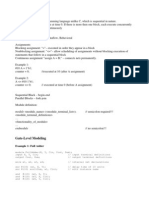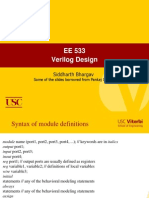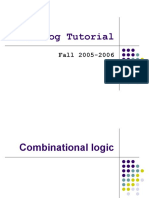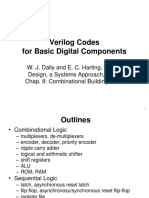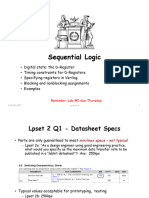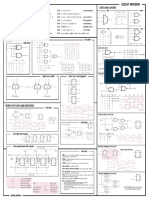0% found this document useful (0 votes)
4 views14 pagesVerilog Presentation
The document compares combinational and sequential circuits, highlighting that combinational circuits depend solely on present inputs while sequential circuits also consider previous inputs. It discusses the role of clocks in controlling circuit processes and introduces Verilog's four levels of abstraction: switch, gate, data flow, and behavioral levels. Additionally, it covers various Verilog concepts such as data types, multiplexers, D flip-flops, and counters with synchronous and asynchronous resets.
Uploaded by
aziz khanCopyright
© © All Rights Reserved
We take content rights seriously. If you suspect this is your content, claim it here.
Available Formats
Download as PDF, TXT or read online on Scribd
0% found this document useful (0 votes)
4 views14 pagesVerilog Presentation
The document compares combinational and sequential circuits, highlighting that combinational circuits depend solely on present inputs while sequential circuits also consider previous inputs. It discusses the role of clocks in controlling circuit processes and introduces Verilog's four levels of abstraction: switch, gate, data flow, and behavioral levels. Additionally, it covers various Verilog concepts such as data types, multiplexers, D flip-flops, and counters with synchronous and asynchronous resets.
Uploaded by
aziz khanCopyright
© © All Rights Reserved
We take content rights seriously. If you suspect this is your content, claim it here.
Available Formats
Download as PDF, TXT or read online on Scribd
/ 14













